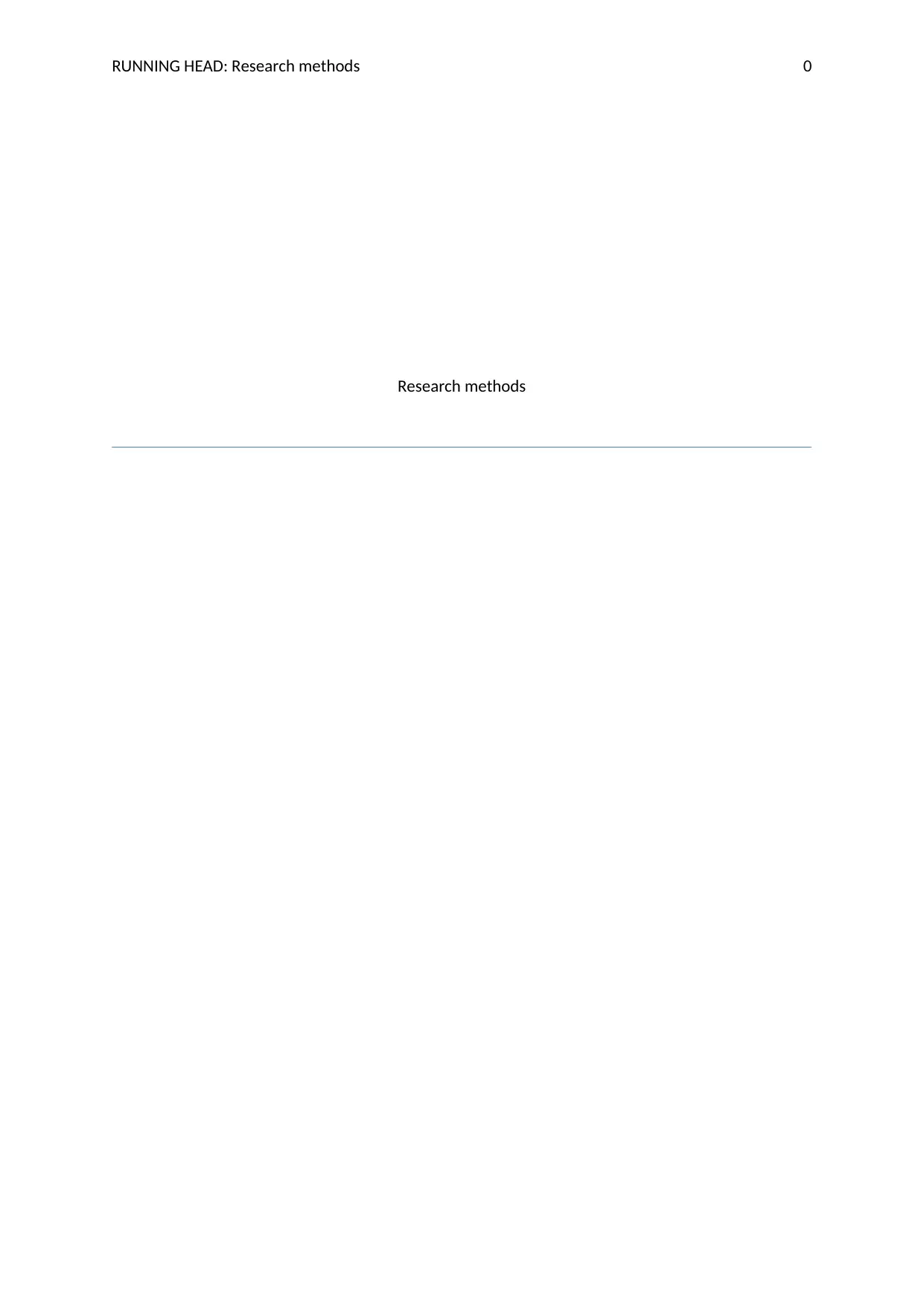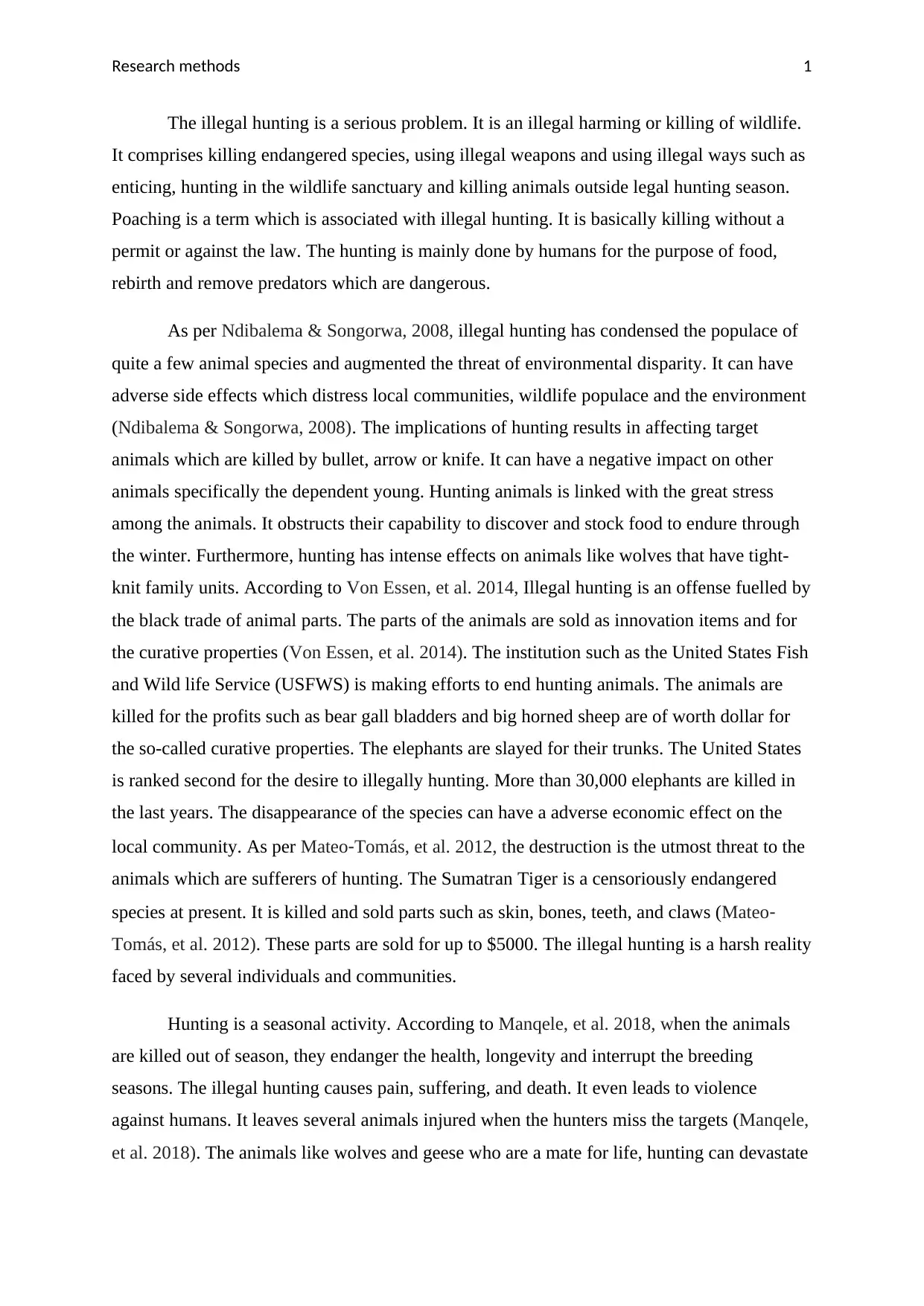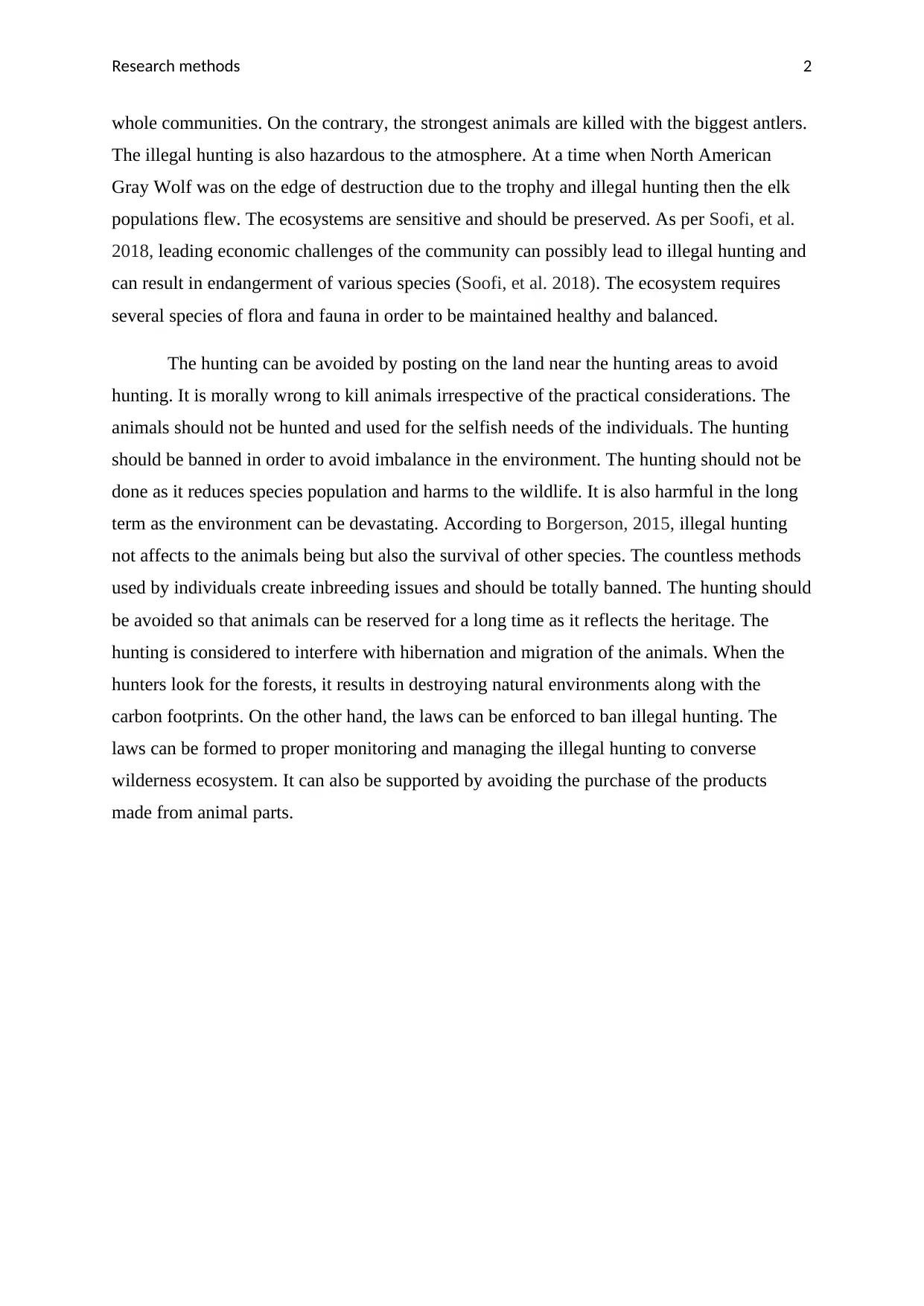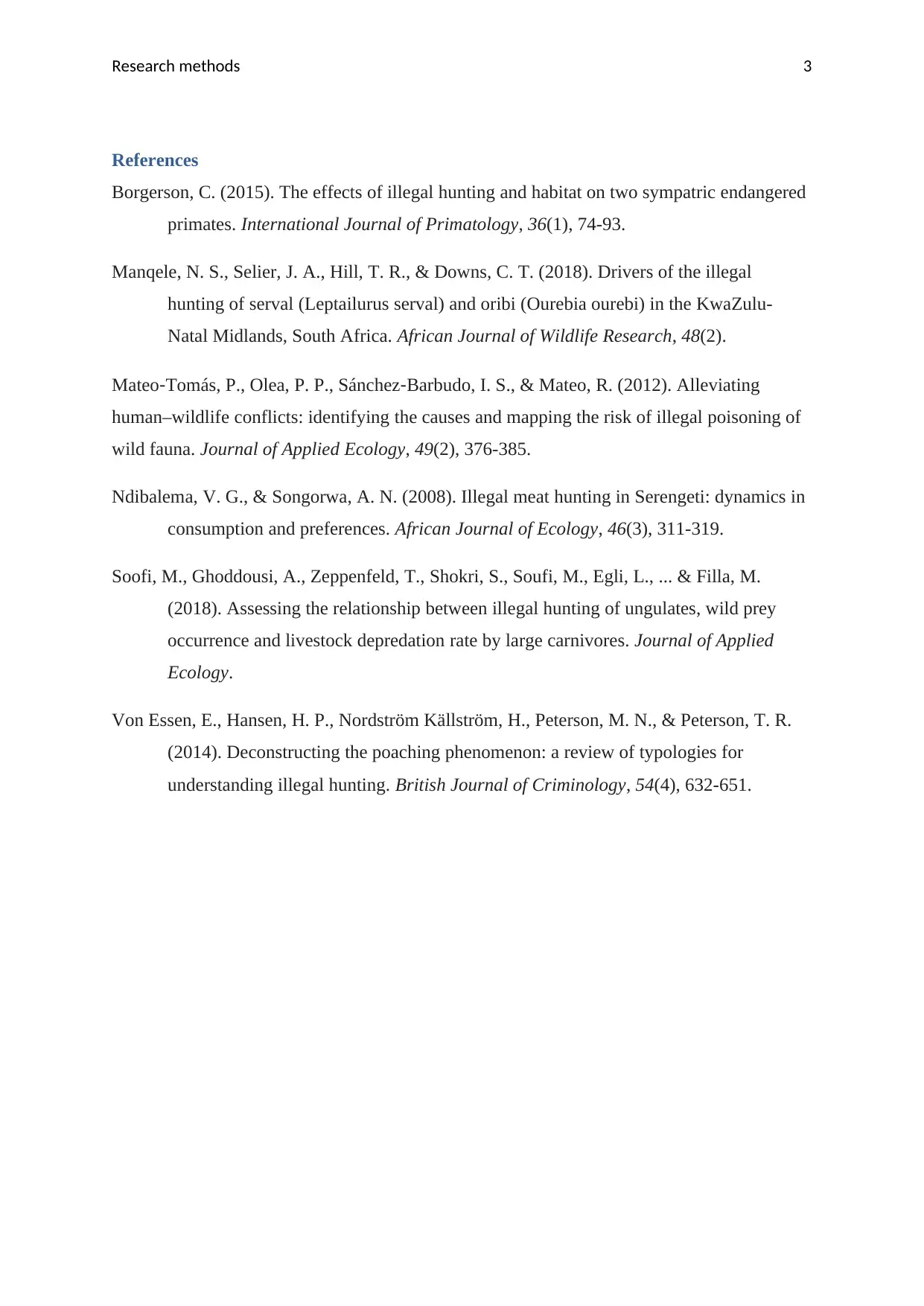A Comprehensive Analysis: The Detrimental Effects of Illegal Hunting
VerifiedAdded on 2023/04/21
|4
|1210
|257
Essay
AI Summary
This essay examines the serious problem of illegal hunting and its detrimental effects on wildlife populations, ecosystem balance, and overall environmental health. It defines illegal hunting as the unlawful harming or killing of wildlife, including endangered species, using prohibited weapons or methods, and hunting outside legal seasons. The essay highlights the adverse consequences of hunting, such as disrupting animal behavior, causing stress, and affecting family units, particularly in species like wolves. Driven by the black market trade in animal parts for innovation items and curative properties, illegal hunting is a global issue, with the United States ranking high in demand. The disappearance of species due to hunting leads to economic repercussions for local communities. The essay emphasizes the moral and practical reasons to ban hunting, including the pain and suffering inflicted on animals, the disruption of breeding seasons, and the long-term damage to the environment. It concludes by advocating for stricter laws, monitoring, and avoidance of purchasing products made from animal parts to conserve wilderness ecosystems and protect endangered species. Desklib offers additional resources and solved assignments for students.
1 out of 4






![[object Object]](/_next/static/media/star-bottom.7253800d.svg)